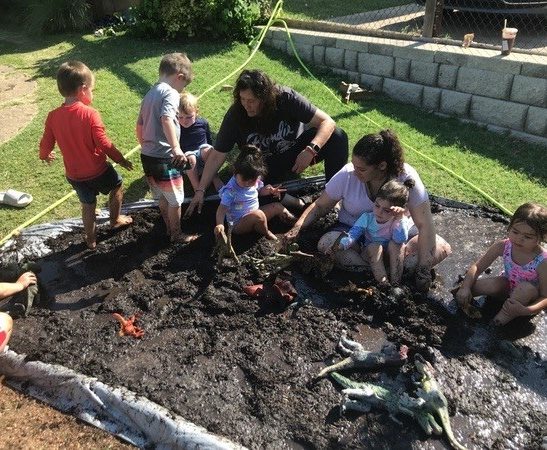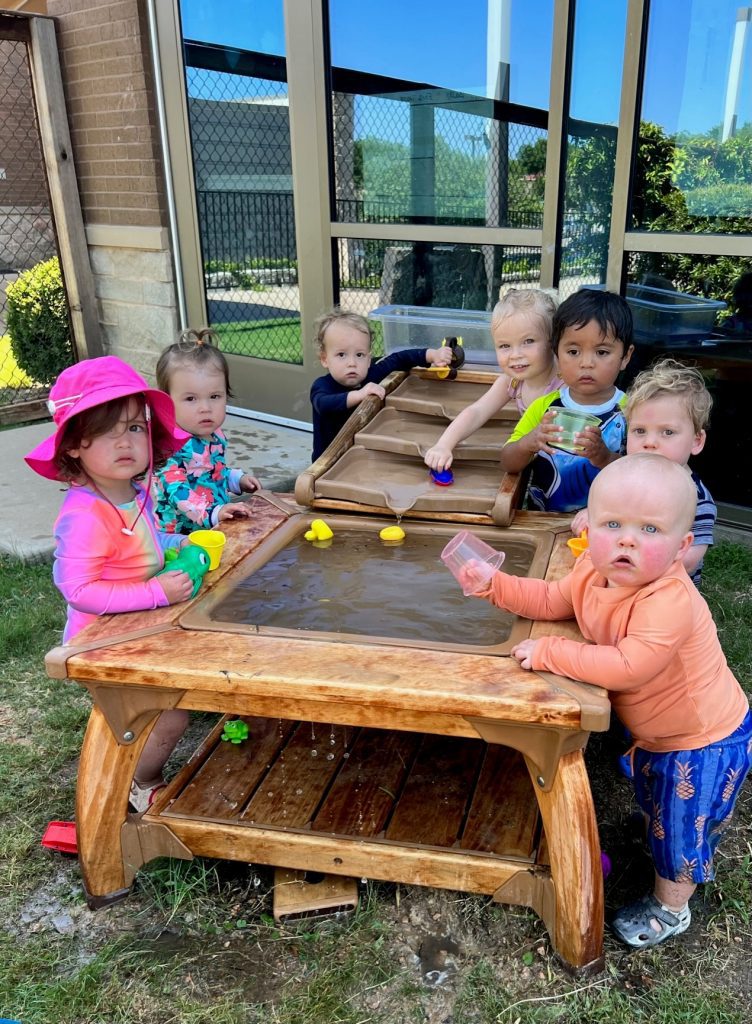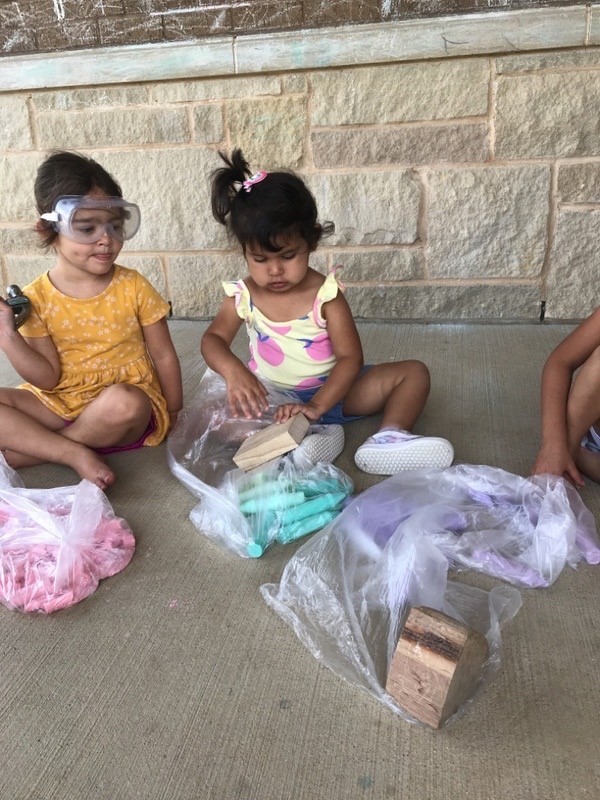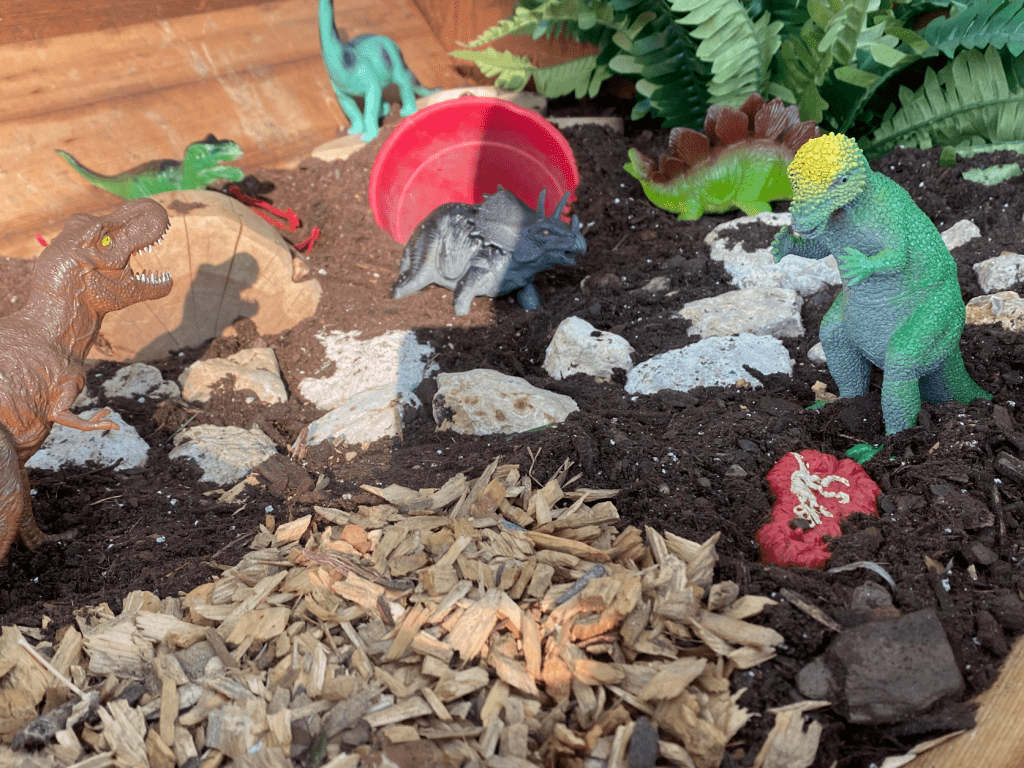

You’ve seen it: the look on a child’s face when they experience something new. Nothing beats that expression of discovery and wonder as a child engages their senses in the course of play. Sure, it can get messy, but sensory play is a key component of the teaching model at Lena Pope’s Early Learning Centers.
In addition to developing their five senses and motor skills, children develop problem solving skills, spatial and body awareness, language, and cognitive skills. Which is why both ELC campuses feature Nature Explore-certified playgrounds, to support this type of natural learning.
We sat down with Eva Rodriguez, lead teacher of the 2-3 year old classroom at our Sanguinet ELC, to talk about what she sees firsthand when her students engage in sensory and outdoor play.
As a teacher, how do you encourage sensory play?
Kids often hesitate and look for permission before doing something really messy.
As teachers, we give them encouragement to keep exploring simply by doing what they’re doing, copying them. My co-teacher. Loretta. and I are all-in with our kids when it comes to sensory play. When they start to paint mud makeup with you (actually on you!), and you see the pure joy on their face – that’s my favorite! I love to watch a child as they try something new the first time.
How do you bring sensory and outdoor play into classroom activities?
We often go on nature walks, and when we do, Loretta and I encourage our students to explore the materials they find outside, to think about what they could use in our projects inside. When they find a rock, stick, or flower that they like and want to bring into the classroom, we prompt them to make a plan for that item, to figure out how they might decorate it or use it to make something else when we go inside. Whatever they imagine, we help them create.

Do you have a favorite activity to do with students?
Every Friday during the summer, we fill the playground with sensory experiences: sprinklers and slip ‘n slides, slime bins, a mud kitchen, and more.
My favorite activity during Splash Days is body paint. Throughout the week, we incorporate multiple learning opportunities into the preparation for this sensory activity: first, we spend a day using tools to crush up chalk for the different colors; another day, we explore science by mixing the chalk with water, corn starch, and lotion to make the paint; and finally, we use creativity and our imaginations to use the paint on ourselves as the canvas!
The students’ imagination amazes me: one minute we are doing “make-up”, the next minute we are painting ourselves into life-size rainbow unicorns! It’s my favorite part of Splash Day!
What do you suggest parents do to make sensory play at home a little easier?
Basically, parents can loosen up a little when it comes to messy play. Allow your kids to make mud! It’s so simple: just give them water, containers in a variety of sizes, and scoops or shovels then let them go to town! If you can manage to get in the mud with them, even better.
Sensory play happens indoors, too, of course. Here are some ideas for that:
- Put rice or beans in a large container and then hide items or toys throughout the beans for your child to discover.
- Make a sheet pan of Jell-O and let your child use cookie cutters to make shapes (or let them crumble it with their hands).
- Create a “dinosaur garden” by putting rocks and dirt or sand in a bin and then adding several toy dinosaurs of varying sizes.
- Use your own creativity to offer play opportunities that are open-ended and that use several different types of materials. You will be amazed at what your kids come up with in response.
